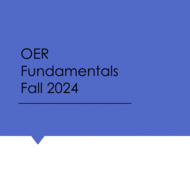Exploring metabolite metabolism using the Enzyme Portal
(View Complete Item Description)This webinar will provide a practical overview of how to use the Enzyme Portal to find enzyme-related information about metabolites. The Enzyme Portal is a freely available resource to find and explore enzyme features. It integrates relevant enzyme data for a wide range of species from various resources including UniProt, PDB, Reactome and CHEMBL. We will demonstrate how to use the Enzyme Portal to find relevant enzymes involved in a specific metabolite biosynthesis or catabolism. Who is this course for? This webinar is aimed at individuals who wish to learn more about enzymes and metabolites. No prior knowledge of bioinformatics is required, but an undergraduate level understanding of biology would be useful.
Material Type: Lecture


















